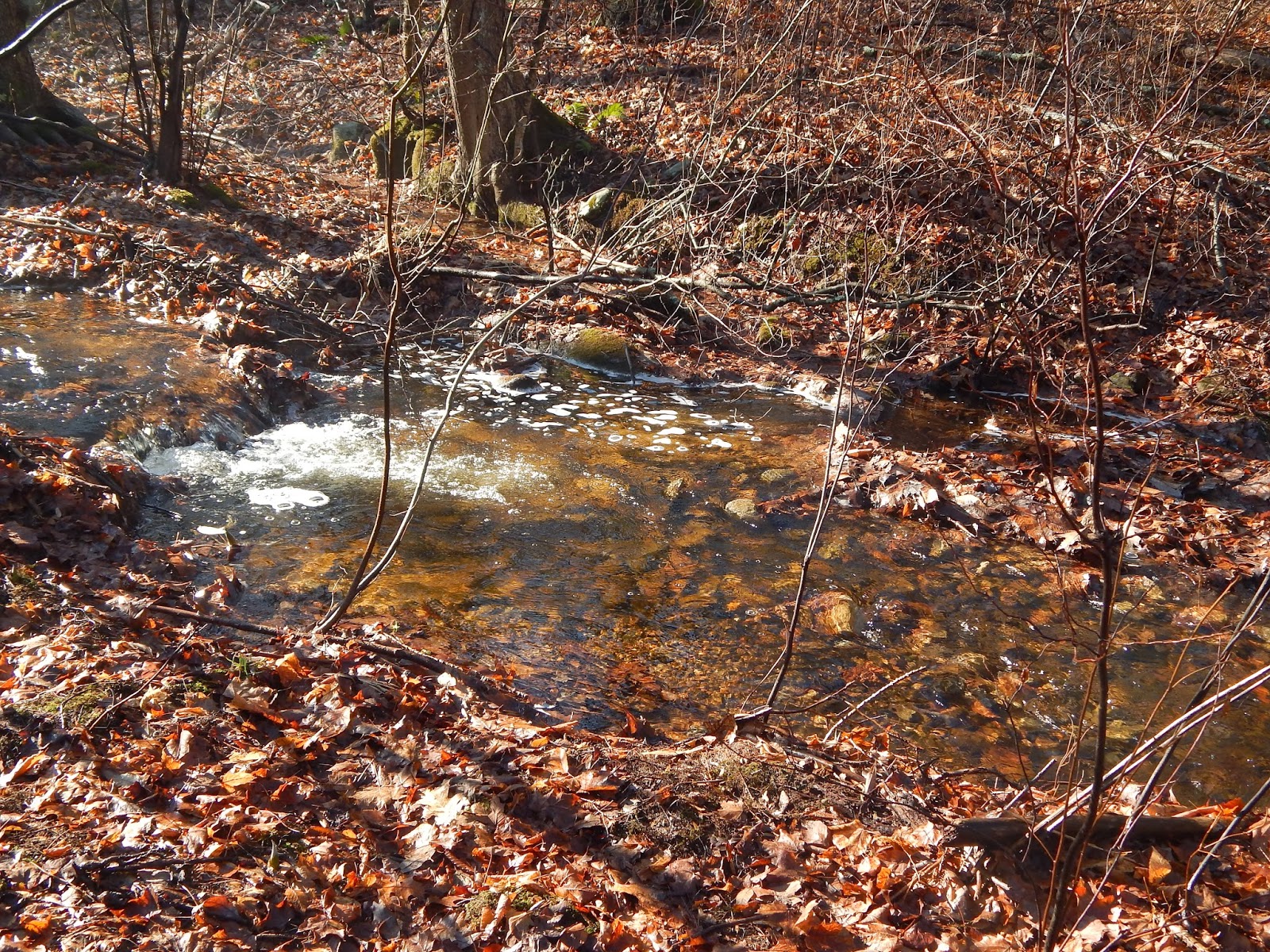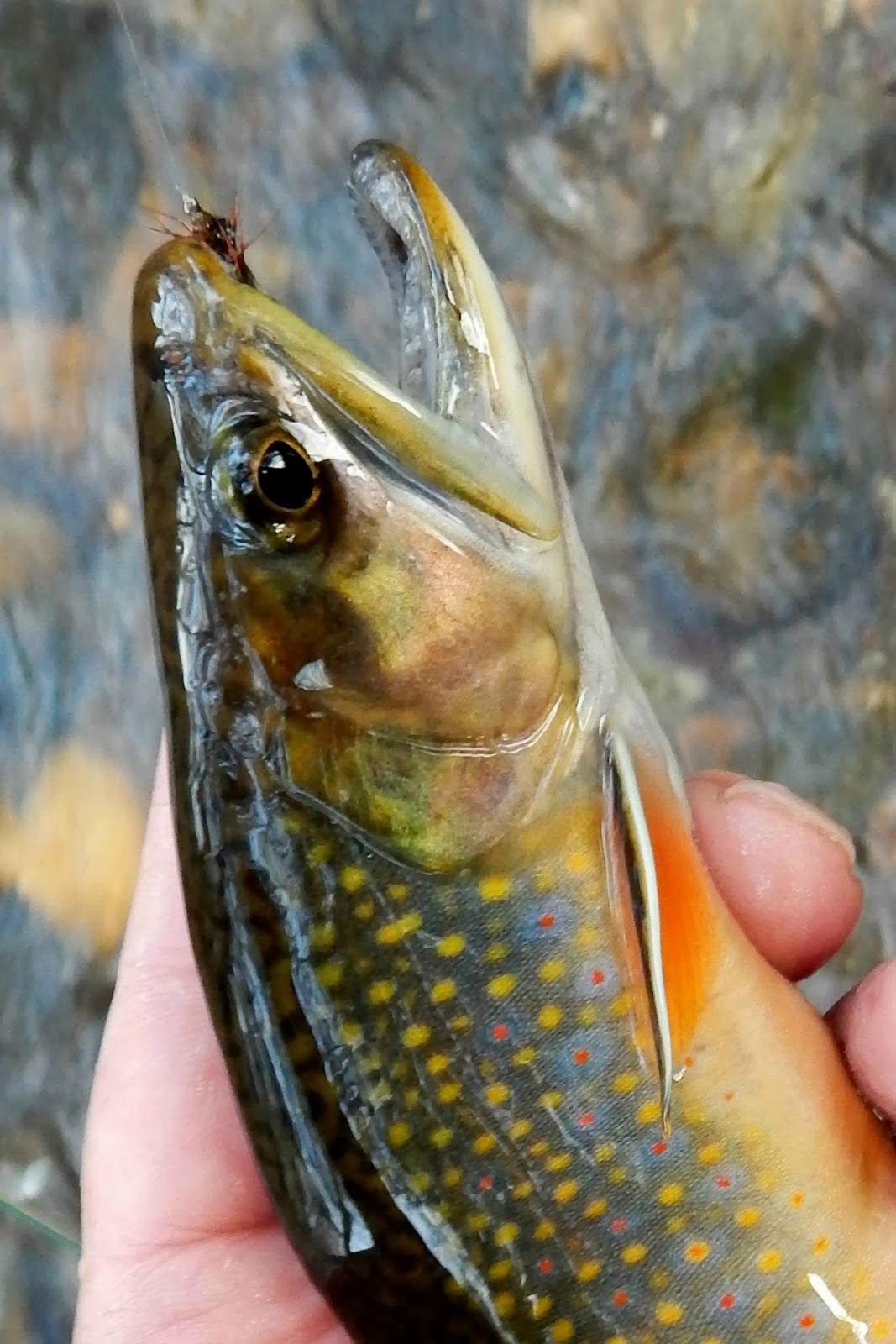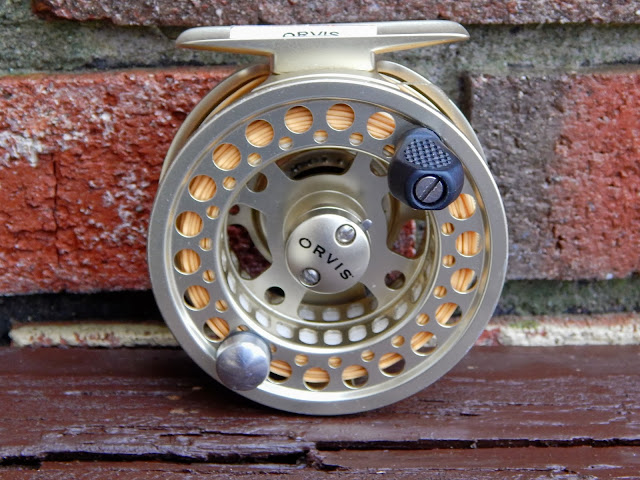For those who love small streams, wild trout, and life...in their simplest form
Friday, January 31, 2014
The "rusty old streamer"
Today is a day for a wonderful story. It's not one of mine but one of a fly fisher in Norway. Jan Olsen-Nauen is an angler, and bamboo fly rod maker. He has a blog, called "Bamboo Fly Rod" and that's where this story was told.
The winter had been some what mild and the opportunity presented itself to go fishing along the sea coast for sea trout. The gear was placed in the car and off I went. On arrival I assembled what was needed, reaching for my fly box I realized it was not there, but left behind on my kitchen table. I reached around the trunk of my car and found what was an old rusty streamer. The fly was pretty beat up, even the tinsel had changed color. Well I was here, and that streamer was all I had so I tied it on and hoped for the best.
The "rusty old streamer" did its thing. Several beautiful sea trout were caught and a few missed, probably because of the hooks poor condition. This story really touched me when I first read it. The simplicity of it is what makes it so wonderful, and it should be told again.
Wednesday, January 29, 2014
Inspiration
Inspiration comes in various ways and not all are required to have such a need. I for one require this and seem to get it most from this book. I have a modest library, most texts are of interests relating to fly fishing, but they are not of the "how to" type of books but books of actual happenings.
"Voelker's Pond" is a book about Robert Traver and a place called Frenchman's Pond. The location of Frenchman's is in the woods of the Upper Peninsula of Michigan. The pond and it's resident brook trout, the "cabin" and the fellows of Voelker's crew are all mentioned and tied into what is life there.
The peace and serenity of Frenchman's is brought forth on almost every page of this journal. I have had this book in my possession for perhaps ten years and I read from it almost daily.
So if your somewhat tired of reading about the fact that your 12 ft leader is not long enough, and the fly your using need a wrap of peacock herl to be effective, or perhaps that 8ft rod should really really be 9 feet. Then your ready to read "Voelker's Pond"
Monday, January 27, 2014
January days,
Winter, January, about this time most of us had enough. Looking at the calendar only 4 days left. February has got to be kinder.
This is a reflection on a couple of visits to a small brook. These were both in January, about 12 days apart. The first visit found the stream in good shape. The ice had all melted and a warm front pushed through giving a wonderful few hours of angling. Brook trout were active and were taken in most places, on a variety of flies. The dry fly was in use and managed to bring a few to the surface.
Since that last outing everything changed. The arctic door was opened and we were in the deep freeze. It's been about 10 days since that cold spell, and yesterday I paid a visit to that stream. As you can see the ice is pulling back, making for some nice lanes. I did not fish yesterday, but I may today.
This wild jewel was taken on a dry fly 12 days ago.
Saturday, January 25, 2014
The "Outback"
"The Outback", no it's not that desolate place located in Australia but a lush well hidden and well defended section of a stream here in Connecticut. I generally fish the "Outback" several times a year, and probably would fish it more often if it were easier to fish. As you can see in the photo of the little camp building the dense underbrush, which includes some of the nastiest thorns I've ever encountered any where. Fishing from the bank is almost impossible and waders, or hip boots are what's needed. One of the issues with waders is that the thorns can rip them up pretty bad.
So what I generally do is get into the stream and try to walk in that way. The stream is a series of riffles and those long, dark slick pools. When walking in water like such your movements send out signals to the brown trout that call the "Outback" home. There are no 20 foot casts made here, if you want to present your dry fly with finesse, it's not happening here.
I like the challenge of the "Outback", and there are those times when I was given the chance to fool one of those browns and brought it to hand.
An overcast day, a light rain falling. At the end of the pool a fish could be seen rising. The cast was a problem because of the current taking the fly away from the fish. I tried to walk to the right side of the the stream, but on my second step my foot loosened the silt from the bottom and sent a cloud downstream. My thoughts were time to go home. I stayed for a spell and the fish never broke the surface again.
Some of the biggest browns that inhabit this stream call "The Outback" home. I have taken a few and lost many, including one that took a Dark Spruce fly one April. We are in a deep freeze right now and the Outback is surely iced up, but come the first thaw I think I'll visit the "Outback"
Thursday, January 23, 2014
Baby it's cold.
The thermometer on the deck this AM is reading 7, not even the birds are responding to the fresh seed I placed there. With this cold fishing is on hold, even the thoughts of some scouting seem to be a far off thought. Later I'll tie a few streamers, and clean a reel or two, or I might even replace a washer in the bathroom faucet. For now I'm going to post a few photos that I am fond of. I hope you'll enjoy them. An old coke machine. It's still in use at the Granville General Store. They also have some awesome cheddar.
A fly shop from yesterday. On the banks of the Housatonic River in Connecticut.
A streamer, is this how a fish sees this offering.
This quaint fly shop is is located on the banks of the Lackawaxen River in Pennsylvania. This is a shop and river I have visited often.
The "Housatonic Special" a Forgotten Fly, created by Walt Stockman.
A small stream wild brown trout. Its beauty and power are clearly shown.
Tuesday, January 21, 2014
A true friend of the brook trout
This evergreen tree of the northeast, the one that lines the sides of trout streams in my native state of Connecticut. This tree is under attack from a predator. A predator not with a chain saw, nor with a bulldozer. This predator, an invasive little bug that's sucking the life out of these majestic trees.
This predators name is the "Hemlock Woolly Adelgid". He's been identified and steps are being taken to rid our forests of him. May we succeed.
A pristine mountain stream in northwest Connecticut. The hemlock stands sentry.
Show me a stream where the hemlock is present, and chances are there will be brook trout swimming in that stream.
A fact, brook trout will be twice as abundant in a stream that's lined with hemlock as one that's lined with hardwoods.
The eastern hemlock can live to be 200 years old. A great deal of good can be accomplished in that many years.
Some hemlocks in the east have grown to 150 feet high....that is majestic.
Brook trout have survived in this stream for all the years I've fished for them. And all those years the hemlock has watched over them.
Sunday, January 19, 2014
January Thaw, a small stream and a top 10
Last week here in the northeast we managed to come out of the deep freeze and begin a January thaw. Several days flirted with that 50 degree mark and with bright sunshine it felt wonderful. So on Wednesday I chose to fish a nice little stream that flows through a chunk of state forest. I've never observed another angler on this stream other than Kirk or Mark. So you can really enjoy the peace and solitude. This was a day that I had planned to fish the usual group of flies, Picket Pin, Pinkie, and perhaps a dry fly or two and that's exactly how I did it.
The stream was incredible. The flow was about perfect, the water clarity was brilliant, and with the sun shinning off of it made it look like ice crystals. I'm thankful places like these are protected from human development and will remain as they are.
This is the fly that took a beating this day. It's a Picket Pin tied on a somewhat different hook. I tied it on a Mustad C53S curved hook. I think if I were to tie in a tuft of marabou for the tail, or perhaps the wing instead of squirrel tail it might also be a fish taker.
This little section has become a favorite. It has a nice long run, it's fairly deep, has some structure, a good set of riffles at the head, and those wonderful hemlocks.
So I let the Pin drift down through, retrieved it several times and was greeted with a swipe in the riffles. So the on the next drift the fish struck and was on.
In a few moments I had the fish to hand. A beautiful wild brook trout. The color as well as the hook on the jaw stood out. A quick photo and off he went.
As many of these beautiful wild jewels I've caught in small streams over the years I might classify this as one of the top 10.
CLICK IMAGES TO ENLARGE
Friday, January 17, 2014
"Silver Badger Prince" and the "Acid Drop Brookie"
 |
| "Silver Badger Prince" |
Wednesday, January 15, 2014
A woodland blue line, January in Connecticut
Monday felt like an early Spring day as I started my walk to this little blue line. The ground was already well into a thaw and the mud some what slippery. The sun can do magic where it shines first and stays long. The stream itself was in prime condition, water flows were very good and the usual deep holes were full. The stream was for the most part ice free with the unusual stretch or two of thick ice along the edge, perhaps because it flows though a valley, or the stream here does not receive its share of sun for a long period.
Lots of nice color, or absence of color in this case. There were signs of green in a few ferns. I know it's only January and in New England these days are few.
We fished the stream and remarked how slow the catching was. There were a few, but far from the norm on a day like this. A few flies were noticed, by us and seemingly not by the fish. It was getting towards midday, and Kirk had to leave. walked with him out, and had plans of fishing another section. On the way out we fished a few "nice" spots, just in case.
In one of those "nice" spots I found this willing guy still in color.
Frayed nerves, perhaps icicles.
I came upon this pool, where in the past I have spooked fish but have never taken one. It's tough to fish it effectively and most times I fail. Well I noticed what appeared to be several trout rising right up close to the bank. There were small stone flys about and this was what they were eating. I tied on a caddis and after many tries I got the fly to drift close enough to where the fish ere feeding. Suddenly a fish rose and took the fly. As I worked the fish to me I could see it was a nice, unfortunately a poorly tied knot gave way and the fish went south.
After changing tippet, I noticed another trout rising in the area where I just hooked up. I tied on a Adams parachute and tried to drift it close to the rising fish. One of those tries I accomplished this and the fish responded and the 2wt did its job. In a few moments a wild brook trout was at hand. "Thanks"
Monday, January 13, 2014
The Large Arbors for the Small Stream
This is the Ross Fly Rise LA reel. It's a reel I have used many times and have never experienced any problems. It weighs 4.4 ounces and balances well on several of my 6 foot rods.
This is the Redington Drift LA. This is also a very reliable reel and at 3.5 ounces it's the lightest of all of my LA reels. This reel balances perfectly on my Cabela's TQR 5ft 2wt rod.
This is the Orvis Battenkill LA. This is my first purchase of a LA reel. I have been using this reel for years and it has never failed. It comes in at 3.9 ounces and balances very well on 6 and 7 foot rods.
Subscribe to:
Posts (Atom)


















































